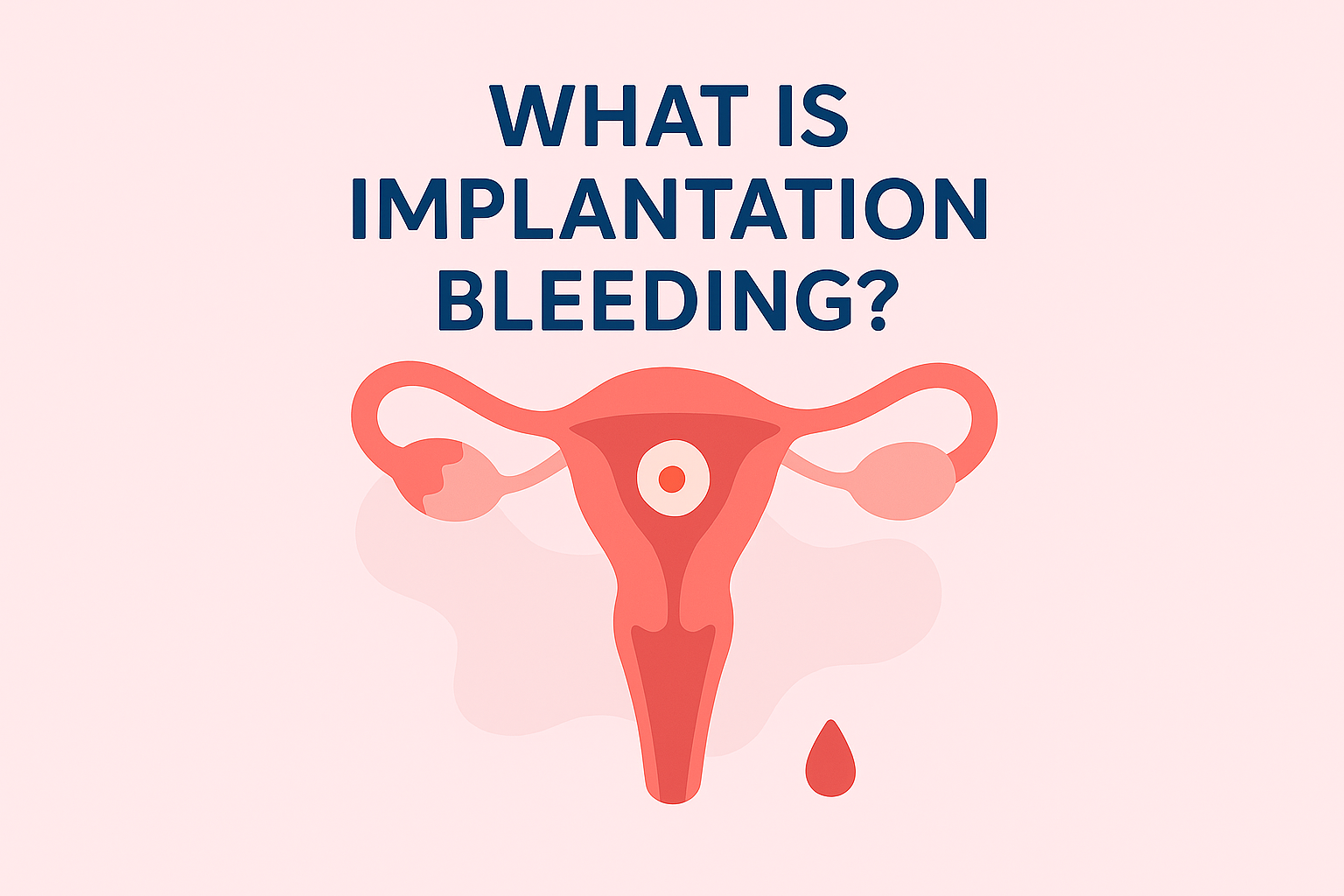Implantation vs Period Calculator
Understand whether your spotting or bleeding could be implantation or your period.
Lorem ipsum dolor sit amet, consectetur adipiscing elit. Ut elit tellus, luctus nec ullamcorper mattis, pulvinar dapibus leo.
What is Implantation Bleeding?
Implantation bleeding is one of the earliest signs of pregnancy and often confuses many with a light period.

Implantation bleeding is one of the earliest signs of pregnancy and often gets confused with a light period. Our Implantation vs Period Calculator helps you understand if your spotting is a sign of early pregnancy or just part of your menstrual cycle.
Illustration: showing uterus and light implantation bleeding, representing early signs of pregnancy.
Implantation bleeding occurs when a fertilized egg attaches to the lining of your uterus. It’s usually lighter than a normal period and happens 6–12 days after ovulation. Common signs include:
Light pink or brown spotting
Short duration (1–2 days)
Mild cramping
No clots
Not all women experience implantation bleeding, and its timing can vary depending on your cycle. Using the Implantation vs Period Calculator can make it easier to spot these subtle differences. You can learn more about implantation bleeding on the American Pregnancy Association for detailed information and guidance.
How Is It Different from a Period?
Confusion often arises between period spotting vs implantation bleeding. While they can appear similar, here are key differences:
| Feature | Implantation Bleeding | Period |
|---|---|---|
| Color | Pink or light brown | Bright red |
| Flow | Very light, sometimes just spotting | Heavier, continuous |
| Duration | 1–2 days | 3–7 days |
| Cramping | Mild | Moderate to severe |
| Timing | 6–12 days after ovulation | Regular cycle (around 14 days after ovulation) |
Understanding these differences helps you interpret your symptoms more accurately and know when to take a pregnancy test. For quick clarity, try our Implantation vs Period Calculator.
How to Use the Implantation bleeding vs Period Calculator
Using our calculator is simple and takes only a few steps:
Enter the first day of your last menstrual period (LMP).
Select your average cycle length.
Add any spotting days or symptoms you’ve noticed.
Click “Calculate” to see your result.
The Implantation vs Period Calculator will suggest whether your spotting is likely implantation bleeding or a normal period — and guide you on when to take a pregnancy test.
Signs You Might Be Pregnant
If the calculator result suggests implantation bleeding, look for these early pregnancy signs:
Mild cramping
Breast tenderness
Nausea or food aversions
Fatigue
Frequent urination
These may appear around the same time as implantation bleeding.
When to Take a Pregnancy Test
If you suspect implantation bleeding, wait until a day after your expected period for the most accurate results. The Implantation vs Period Calculator can help estimate the best testing time.
Tips for Tracking Your Cycle
Tracking your cycle can make it easier to distinguish implantation bleeding from your period:
Keep a calendar: Note the start and end dates of your period each month.
Monitor spotting: Record light bleeding or unusual discharge.
Track ovulation: Use ovulation strips or our Ovulation Calculator.
Listen to your body: Cramping, breast tenderness, and mood changes can help predict fertile days.
By staying consistent with tracking, you’ll be better equipped to notice early pregnancy signs or irregular cycles.
Why Use Our Calculator?
Our Implantation vs Period Calculator is designed to give you:
Accurate estimates based on your cycle
Quick results without complicated calculations
Helpful insights into your reproductive health
Links to other fertility tools to track ovulation and pregnancy potential
It’s a safe, easy-to-use tool for anyone trying to understand their cycle better.
When to Use the Implantation vs Period Calculator
If you notice light spotting around ovulation
When trying to conceive and track early pregnancy signs
To monitor changes in your cycle or bleeding patterns
Before taking a home pregnancy test to time it accurately
Benefits of the Implantation vs Period Calculator
Helps identify early signs of pregnancy
Differentiates between implantation bleeding and period spotting
Provides guidance on testing and tracking your cycle
Works as part of a comprehensive fertility toolkit
Related Tools
Ovulation Calculator: Determine your fertile window and ovulation days.
Due date Calculator: Estimate your due date if you are pregnant.
Ivf Due date Calculator: Track the best days for conception.
Using these tools together can give a complete picture of your fertility and reproductive health.
Frequently Asked Questions
What is implantation bleeding
implantation bleeding is light spotting that occurs when a fertilized egg attaches itself to the lining of the uterus. It usually happens about 6–12 days after ovulation and is one of the earliest signs of pregnancy. The bleeding is typically very light—pink or brown in color—and lasts for a short time, often 1–2 days. Unlike a period, it doesn’t have heavy flow or severe cramps.
Can you take a pregnancy test during implantation bleeding
It’s better to wait a few days after implantation bleeding before taking a pregnancy test, as hCG levels may still be too low. Testing about 3–5 days later gives more accurate results.
How long after implantation bleeding can i test
You can take a pregnancy test about 3–5 days after implantation bleeding or when your period is due for the most accurate result.
Does implantation bleeding have clotting
No, implantation bleeding does not have clots. It’s usually light spotting that appears pink or brown, unlike a period which often includes clots.
When does implantation bleeding occur
Implantation bleeding usually occurs 6–12 days after ovulation, or about a week before your expected period.
How long does implantation bleeding last
Implantation bleeding usually lasts 1 to 2 days, and it’s much lighter than a regular period.
What is a chemical pregnancy
A chemical pregnancy is an early miscarriage that happens shortly after implantation. It means a fertilized egg briefly attached to the uterus but didn’t develop further, often before a missed period.
